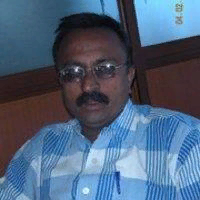International Journal of Image, Graphics and Signal Processing (IJIGSP)
IJIGSP Vol. 9, No. 9, 8 Sep. 2017
Cover page and Table of Contents: PDF (size: 882KB)
Curvilinear Tracing Approach for Extracting Kannada Word Sign Symbol from Sign Video
Full Text (PDF, 882KB), PP.18-27
Views: 0 Downloads: 0
Author(s)
Index Terms
Curvilinear feature, leap forward tracing, support vector machine, kannada sign language
Abstract
Gesture based communications are utilized as a primary method of correspondence, however, the differing qualities in the sign image portrayal limit its use to district bound. There is a tremendous assorted quality in the sign image portrayal from one nation to another, one state to another. In India, there is distinctive gesture-based communication watched for each state locale. It is henceforth exceptionally troublesome for one area individual to convey to other utilizing a signature image. This paper proposes a curvilinear tracing approach for the shape portrayal of Kannada communication via gestures acknowledgment. To build up this approach, a dataset is consequently made with all Swaragalu, Vyanjanagalu, Materials and Numbers in Kannada dialect. The arrangement of the dataset is framed by characterizing a vocabulary dataset for various sign images utilized as a part of regular interfacing. In the portrayal of gesture-based communication for acknowledgment, edge elements of hand areas are thought to be an ideal element portrayal of communication through signing. In the preparing of gesture-based communication, the agent includes assumes a critical part in arrangement execution. For the developed approach of sign language detection, where a single significant transformation is carried out, a word level detection is then performed. To represent the processing efficiency, a set of cue symbols is used for formulating a word. This word symbols are then processed to evaluate the performance for sign language detection. Word processing is carried out as a recursive process of a single cue symbol representation, where each frame data are processed for a curvilinear shape feature. The frame data are extracted based on the frame reading rate and multiple frames are processed in successive format to extract the region of interest. A system outline to process the video data and to give an optimal frame processing for sign recognition a word level process is performed.
Cite This Paper
Ramesh M. Kagalkar, S.V Gumaste,"Curvilinear Tracing Approach for Extracting Kannada Word Sign Symbol from Sign Video", International Journal of Image, Graphics and Signal Processing(IJIGSP), Vol.9, No.9, pp.18-27, 2017. DOI: 10.5815/ijigsp.2017.09.03
Reference
[1]Lalit Kane and Pritee Khanna (2012) ‘Towards establishing a communication an Indian sign language perspective’, 4th International Conference on Intelligent Human Computer Interaction, Kharagpur, IEEE, pp.1-6.
[2]Vivek Kumar Verma, Sumit Srivastava and Naveen Kumar (2015) ‘A Comprehensive Review Automation of Indian Sign Language’, International Conference on Advances in Computer Engineering and Applications (ICACEA), IEEE, pp-138-142.
[3]Pratibha Pandey and Vinay Jain (2015) ’Hand Gesture Recognition for Sign Language Recognition: A Review’, International Journal of Science, Engineering and Technology Research (IJSETR), Vol. 4, Issue 3.
[4]Besacier, L., Barnard, E., Karpov, A. and Schultz, T. (2013) ‘Automatic Speech Recognition for Under- Resourced Languages: A Survey’, Speech Communication, Elsevier, Vol.56, pp- 85-100.
[5]Cristina Bausa and Albert Costa (2015) ‘On the Temporal Dynamics of Sign Production: An ERP Study in Catalan Sign Language (LSC)’, Elsevier, Vol. 1609, Issue 3, pp 40-53.
[6]P.M. Mahajan and Jagruti S. Chaudhari (2015) ‘Review of Finger Spelling Sign Language Recognition’, International Journal of (IJETT), Vol. 22, Number 9.
[7]Prerna Gupta, Garima Joshi and Maitreyee Dutta (2015) ‘Comparative Analysis of Movement and Tracking Techniques for Indian SignLanguage Recognition’, 5th International Conference on Advanced Computing & Communication Technologies, IEEE, PP-90-95, 2015.
[8]Kanchan Dabre (2014) ‘Machine Learning Model for Sign Language Interpretation using Webcam Images’, International Conference on Circuits, Systems, Communication and Information Technology Applications (CSCITA) IEEE, pp.317-321.
[9]Daleesha M Viswanathan and Sumam Mary Idicula (2015) ‘Recent Developments in Indian Sign Language Recognition: An Analysis’, International Journal of Computer Science and Information Technologies, Vol. 6 (1), 2015.
[10]Ananya Choudhury, Anjan Kumar Talukdar and Kandarpa Kumar Sarma (2014) ‘A Conditional Random Field based Indian Sign Language Recognition System under Complex Background’, 4th International Conference on Communication Systems and Network Technologies, IEEE, pp-900-904, 2014.
[11]W.W.Kong and Surendra Ranganath (2014) ‘Towards subject independent continuous sign language recognition: a segment and merge approach’, Pattern Recognition, Elsevier, Vol.47, Issue 3, pp- 1294-1308, 2014.
[12]Mohidul Alam Laskar (2015) ‘Stereo vision-based hand gesture recognition’, Second International Symposium on Computer Vision and the Internet , Procedia Computer Science 58, Elsevier, Vol.58, pp.194-201.
[13]Ravikiran Krishnann and Sudeep Sarkar (2015) Conditional distance based matching for one- shot gesture recognition’, Pattern Recognition, Elsevier, Vol.48, Issue 4, pp.1304-1314.
[14]M.K. Bhuyan, D. Ghoah, and P.K. Bora (2006) ‘A Framework for hand gesture recognition with applications to sign language’, India Conference, IEEE, pp.1-6.
[15]T. Shanableh and K. Assaleh (2011) ‘User- independent recognition of arabic sign language for facilitating communication with the deaf community’, Digital Signal Processing, Elsevier, Vol.21, Issue 4, pp.535-542, 2011.

